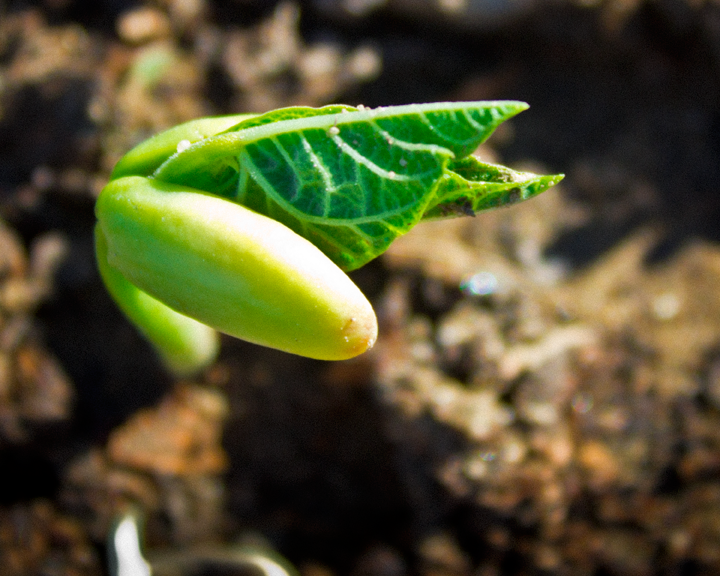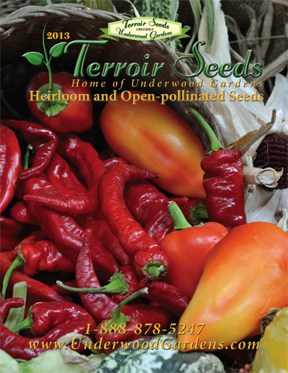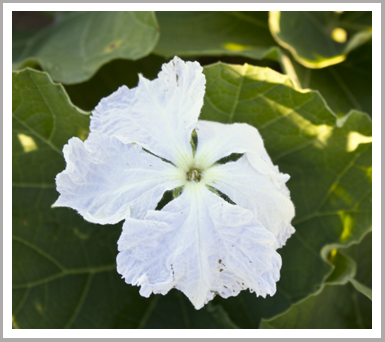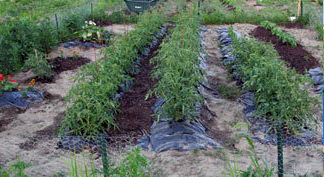As mention in part 1, I'm going to be growing a lot of tomato varieties, sixteen to be exact. A few more then I originally thought, but since I have a knack for growing them, I might as well work with the inherent magic that is presented. Without further ado, and in no particular order, I give you tomatoes 2011:
Pomodoro Belmonte – That is what the front of this beautiful package of seeds from Italy says. Pomodoro is Italian for tomato, and Belmonte is a heirloom from the Calabria region in Italy. There is a town called Belmonte in Italy, which the residents are very proud of their culinary flag.
I was so excited to find these tomatoes. They will be part of my Family Garden Quilt. My paternal grandparents are from Calabria, so to find a tomato that is from their region is really very special. While my grandparents are gone, I will be sharing a taste of a tomato that I would venture a guess they tasted before they left for America. I shared some seeds with my cousins who will be growing them this year also. One tomato, many generations, and a common experience of taste, aroma and visual stimulation.
Black Cherry Tomato – This is considered a rare cherry tomato. From what I read, black tomatoes are argued by a lot of connoisseurs to be the best tasting color in palette of tomato colors. I love cherry tomatoes, and these are said to produce and abundant crop.
Goose Creek Tomato – The story of this tomato is that a Caribbean slave smuggled these seeds aboard a ship that docked near Goose Creek, South Carolina. She planted the seeds the first spring after she arrived, and the seeds have been passed down through generations of her family. I look forward to sharing the taste that motivated a slave to smuggle seeds with her on her journey, and shared with her family as a true heirloom.
Lime Green Salad Tomatoes – These are new to me this year. They are small fruits, early season and grow on compact plants. Green tomatoes have a great flavor, and this variety is said to be be prolific. I'm excited to mix these with the black cherry tomatoes in a very colorful salad.
Northern Lights – Another early season variety. Last year I planted all mid to late season varieties. I ended up with a boat load of tomatoes that ripened all at once, over a two week period. It's a bicolor, red and yellow, and smaller then most of the bicolors that are around. I may never see the northern lights but I will be able to say I tasted them.
Middle Tennessee Low Acid – These seeds were a gift from a purchase from tomatofest.com. What a great surprise. These large red beefsteaks have a low acidity to them, something I used to only associate with yellow tomatoes. Now this gift of seeds will not only broaden my selection of tomatoes that I grow, but my knowledge of low acid tomatoes.
Red Fig – I was fascinated by the story of this tomato. Imagine that. Me fascinated by a story. Grown since the early 1800's in America, this small pear shaped, red tomato got it's name from a process in which they ended dried out and stored as a fig substitute. Yum. You can about that process here.
Grandfather Ashlock – More history that I'm going to grow and taste. Three Ashlock brothers served George Washington in the Revolutionary War., One brother settled in Kentucky, where he grew this pink, potato-leaf beefsteak variety. The seeds were passed along the generations, and this is a very rare tomato.
Cherokee Chocolate – Cherokee Purples are my favorite tomato overall,and any variety that comes from them is going to get attention from me. From what I read, there's not much difference in taste, but it's the color and size that distinguishes the chocolate from the purple. Evidently, there was mutation in a grower's garden that changed the color of the epidermis from clear to yellow, which changed the color of the fruit to mahogany.
Cherokee Purples – My favorite tomato, all though last year Henderson's Pink Ponderosas swooped in and stole my heart. The Cherokee Purples though, still retain the top spot. An amazing taste experience for me. And quite beautiful to look at. I saved seeds from last year's garden.
Watermelon Pink Beefsteak – These tomatoes are big, red and very sweet. Last year they were the least prolific in my garden, but produced some of of the largest tomatoes overall. During the ripening process, I observed a couple that developed green stripes on them, and for a couple days they had the markings of a watermelon. It's said that it's the little things in life that make it worth living. Seeing that process is one of them. Allow yourself to see it too by growing them.
Mark Twain – I never heard of these tomaotes before, and I haven't found the reason why they are named for Mark Twain yet. I will do my best though to find out. These are another very rare tomato, one that I will drive from NJ to Tennessee to buy Mark Twain tomato plants. They will be featured post in the future, so stay tuned for more about them.
Pomodoro Cuor Di Bue – Or Oxheart, or Heart of the Bull. Another Italian variety, and since I am a Taurus, I do have heart, and I am of Italian descent, this is me in a tomato. As I encourage people to look at plants as a reflection of themselves, and their family, this tomato demonstrates that concept for me. It's an oxheart shaped tomato, pink/red in color, very meaty from what I read, and a nice saucing tomato. It's also considered a rare tomato by some. I look forward to growing them. I grew an Orange Oxheart one year, and I just loved the shape, and flavor of that tomato.
Rutger's Tomato – I grew this New Jersey heirloom last year. A wonderful tomato I have to say. Small sized fruits, very prolific, a great taste, no cracking problems, and overall a tomato that demonstrates what a Jersey Tomato is all about. The local lore here in New Jersey is that we grow the best tasting tomatoes. Anywhere.
Boxcar Willie – Another New Jersey heirloom, a late season orange/red tomato that will round out my Family Garden Quilt as representative of learning to grow tomatoes in New Jersey. I welcome this tomato into the fold, and look forward to making a nice sauce with the Rutgers for a true Jersey Tomato sauce.
"Bell Tomatoes" – I put the name of this tomato in parentheses because that's the name of the tomato that these seeds originated from. The seeds are part of a larger seed collecting story that I feel I'm living right now. This is another post in the making, and has the potential to add a significant layer to the story of Vanishing Feast. For now thought I will leave you with the cryptic instructions I was given, "...plant the paper towel".
That's the list for this year. It's through the power of seeds that I can do this. They offer me the opportunity to grow history, and tickle and tantalize my senses like so many generations before, and hopefully after, providing that this feast for the senses does not vanish.
 The pace is quick, and I'm slowing down due to the fact that I'm not as young as the day before. This is not a lament about old age, it's a fact of life. Hopefully, these two projects will speed my transition to a day job working on projects like these.
First though, good news on the gardening front. I'm ahead of the game. One third of my tomato plants are planted in addition to my Adventurers in Spring Gardening. I'm on track to have my garden complete by the time I usually start to plant. This is a good thing. More about the rainbow of heirloom tomato varieties later.
The pace is quick, and I'm slowing down due to the fact that I'm not as young as the day before. This is not a lament about old age, it's a fact of life. Hopefully, these two projects will speed my transition to a day job working on projects like these.
First though, good news on the gardening front. I'm ahead of the game. One third of my tomato plants are planted in addition to my Adventurers in Spring Gardening. I'm on track to have my garden complete by the time I usually start to plant. This is a good thing. More about the rainbow of heirloom tomato varieties later.



